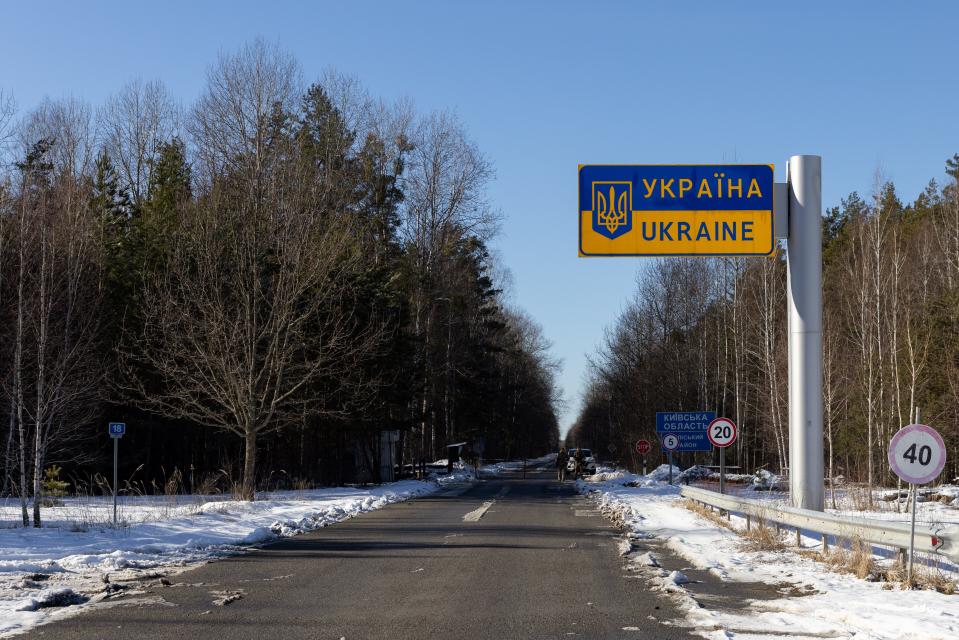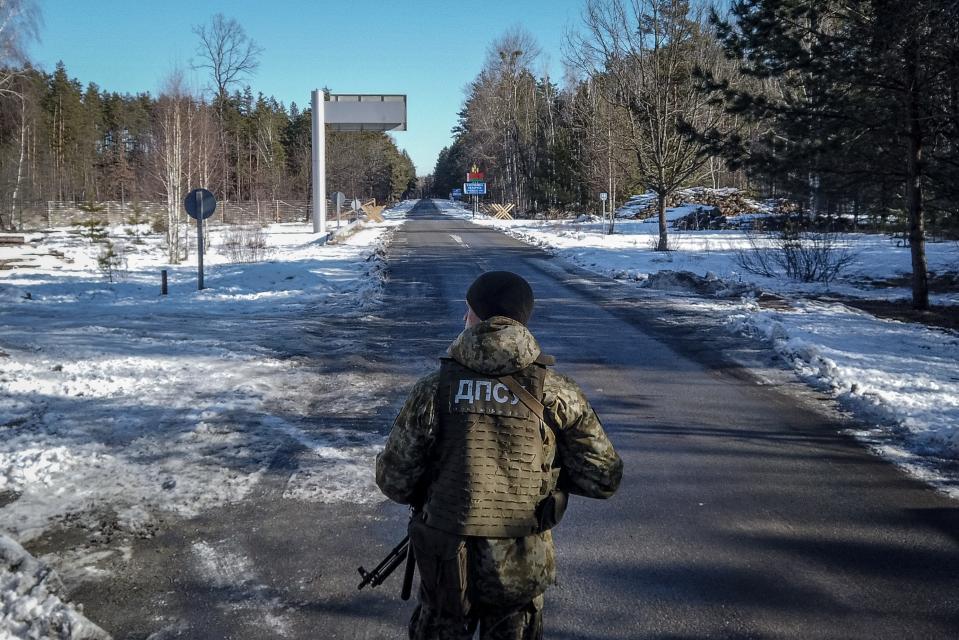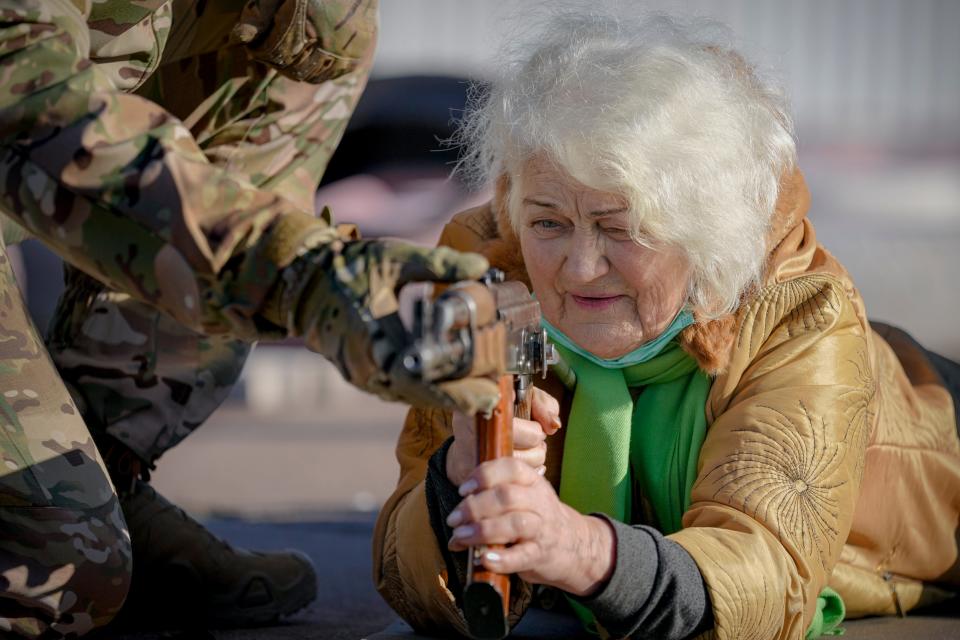What is a false flag? US says Russia may use the tactic to justify Ukraine invasion

WASHINGTON – Biden administration officials have been warning since early February that Russia could fabricate a pretext for invading Ukraine, such as staging a fake attack by Ukrainian forces on Russians.
Pentagon spokesman John Kirby said Feb. 3 that such a “false flag” operation is one of several options being explored by Moscow “to try to create a public narrative that they are the victim and that Ukraine is the aggressor.”
Those warnings have continued as officials have said in recent days that military action could occur at any time.
On Friday, National Security Adviser Jake Sullivan said officials are “firmly convinced” the Russians “are looking hard at the creation of a pretext” if they move forward with an invasion.
Appearing on CNN’s "State of the Union" on Sunday, Sullivan said the world “should be prepared for Russia staging a pretext and then launching a potential military action.”
“We are going to make sure that we are laying out for the world what we see as transparently and plainly as we possibly can,” he said.
Here’s what a false flag operation might look like and what’s behind that allegation.
Video: White House asks Americans in Ukraine to 'depart immediately'
Russia-Ukraine explained: Inside the crisis as US, allies await next move
What is a 'false flag' operation?
False flags refer to the misuse of literal flags to disguise the identity of a military force. But the tactic generally refers to attempts to disguise identity or motivation.
People may be familiar with false flag operations from conspiracy theories – such as the false argument that antifa was behind the 2021 attack on the U.S. Capitol. But they may not associate the term with the actions of nations, said Jason Blazakis, professor at the Middlebury Institute of International Studies and an expert on special operations research.
“False flags are important because they can help destabilize an opponent,” he said, allowing weaker states to project more power than they actually have.
The fact that Russia is significantly weaker than the United States and has a lot of apprehension about the encroachment of NATO into its neighborhood, Blazakis said, “is another reason why a false flag operation makes a lot of sense.”
The spark for a wider war?: Why Americans should care about Russia's aggression against Ukraine

What would it look like?
Officials initially said they have evidence showing Russia is planning to develop a propaganda video depicting a fabricated attack on its troops.
Kirby said the video would include graphic images of corpses as well as actors depicting mourners. It would also show images of destroyed locations and of military equipment, some of which would be made to look like it was supplied to Ukraine from Western allies.
“We've seen these kinds of activities by the Russians in the past, and we believe it's important, when we see it like this and we can, to call it out,” Kirby said Feb. 3.
On Sunday, Sullivan said the Russian media have been laying the groundwork for a possible false flag operation by “trying to condition their public that some kind of attack by the Ukrainians is imminent.”
“And there is a kind of bizarre quality to all of this, where the Russians are claiming they are the ones who are under threat, despite the fact that they have amassed more than 100,000 forces … on the border of their neighbor,” he said on CBS News’ "Face the Nation."
Blazakis said the possible deceptions appear to have grown in seriousness, beyond a fake video.
“There are a lot of potential options on the table for the Russians to use a false flag,” he said.
Those options include a cyberattack on Russian infrastructure that would be blamed on Ukrainian hackers or an infiltration or manipulation of Ukrainian nationalists to attack Russians, he said.
What intelligence does US have on false flag?
U.S. officials haven’t offered evidence for their claims. They’ve said they don’t want the Russians to learn how they’re gathering the information.
That’s generated some pushback, with officials being asked why their intelligence should be trusted when the U.S. used wrong information about weapons of mass destruction to justify its invasion of Iraq.
Sullivan has responded that the current intelligence is being used to stop, not start, a war.
“And I think that fundamentally gives it, at the outset, a different level of credibility,” he told CNN on Sunday.
He added that NATO allies have reviewed the intelligence and reached the same conclusion.
Why is Putin threatening Ukraine?: Respect, fear, power at play in Russian leader's motivations
That’s an important point for Daniel Chirot, emeritus professor of international politics at the University of Washington.
“It certainly seems credible because it's coming from a lot of sources,” he said. “We've had examples of supposedly good intelligence leaks that turned out not to be true. But when you look, you’d see that they came from very small sources – one or two people, one or two files – not this general wave of agreement about what's happening.”

Eugene Rumer, director of the Russia and Eurasia Program at the Carnegie Endowment for International Peace, said U.S. officials have also stressed that one piece of critical intelligence is not available.
“And this is insights into (Russian President Vladimir) Putin’s thinking,” Rumer said. “They’re not pretending like they have some kind of an indicator that would lead them to conclude that Putin has made this decision or that decision.”
Why is the White House sharing warnings about a false flag?
Administration officials have said they are sounding the alarm to pressure Russia not to take this route by countering “false information with true information.”
“If they decide to go ahead anyway, it makes it a bit harder for them after the fact to use that operation as a legitimate justification for choosing to go to war,” Jon Finer, deputy national security adviser, told NPR.
Rumer called that a very smart strategy. One of the few effective tools the U.S. has is not necessarily deterring Putin but mobilizing transatlantic support for Ukraine, he said.
“I think that it's a pretty effective weapon to put the spotlight on the deliberately falsified nature of the Russian narrative,” he said.
Exposing Russia may allow the United States to gather more support at home and in the European Union, but it won’t work in Russia because of the state-controlled media, Blazakis said.
“There's going to still be popular support for Putin,” he said. In fact, Blazakis said, Putin may need the cover of a false flag operation to launch an invasion because of unease Russians have expressed about a possible attack.

Leader to leader: Biden warns Russia of costs of Ukraine invasion
How has Russia responded?
President Joe Biden raised the issue when he spoke with Putin on Saturday, a senior administration official indirectly confirmed to reporters. But the official, who described the leaders’ conversation on the condition of anonymity, would not characterize Putin’s response.
Publicly, Russian officials have charged the United States with conducting a misinformation campaign about a possible invasion.
Dmitry Polyanskiy, Russia’s deputy ambassador to the United Nations, has accused the U.S. of “baseless scaremongering on alleged Russian plans to attack.”
“First they create a hype about alleged Russian plans for aggression that existed only in their troubled imagination, then promote info about nonexistent video as its proof and now they take credit for ruining our never-existing plot,” Polyanskiy tweeted Feb. 4. “Solo Delirium politics?”
Russia both uses false flag operations and accuses others of using false flag operations to undermine trust in information, according to Kate Starbird, an expert on misinformation at the University of Washington.
“It’s both projection and an effective tactic of making it difficult for people to make sense of events in the world,” she tweeted.
When Russia annexed Crimea in 2014, Moscow initially denied the masked men taking over government buildings were Russian military forces.
“There is a long history there,” Rumer said.
Military strength compared: How long could Ukrainians hold off an attack?
How has Ukraine responded?
Ukrainian President Volodymyr Zelenskyy has not found U.S. warnings of an attack helpful.
“All of this information helps only to create panic,” he said at a recent news conference.
Rumer said the posture of Ukraine’s government is a mystery.
While there’s been news coverage of Ukrainians training to defend themselves against an invasion, Rumer said little attention has been paid to the lack of unity and cohesion that exists among the political elite.
“Ukrainian politics is still a mess,” he said. “And that’s … shocking, but not surprising, given the history of Ukraine that we have observed over the past 30 years as an independent country.”
This article originally appeared on USA TODAY: Why Russia may use a false flag operation in Ukraine

